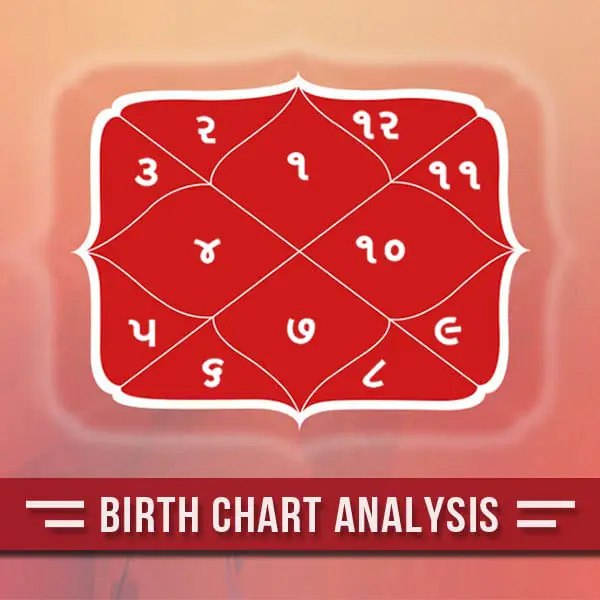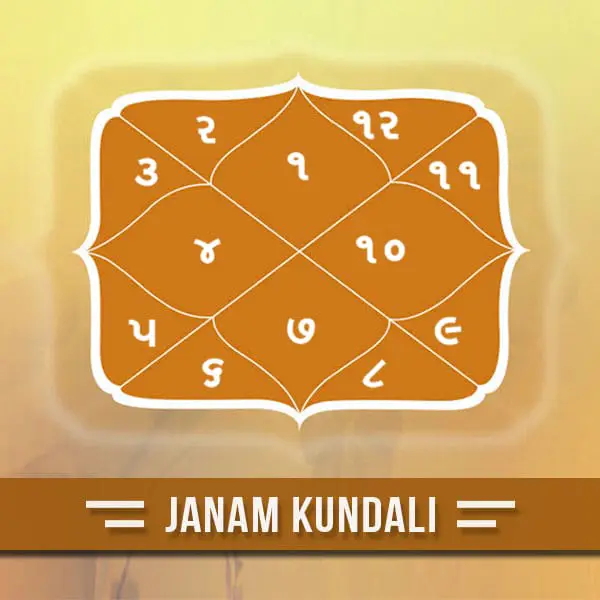
Medical Astrology
Medical Astrology
चिकित्सा ज्योतिष
Medical Astrology (चिकित्सा ज्योतिष) has always played an important part in traditional medical systems the world over, and Greco-Arabic Medicine was no exception. Because today’s perception of the universe is governed by “Rational” principles, that is, we tend to see the world around us in terms of how (we are told) it really exists, the ancients’ way of trying to determine information about a disease by observing the position of the planets and stars may seem rather strange to some of us.
But the ancients saw the world and the universe in a different way than we do today; they perceived and interpreted the world around them as a reality, that is, as they experienced it both objectively and subjectively. They therefore saw no problem in accepting the correlations they found between their own experiences and the great cosmic clock of planets and stars. To them it was no stranger to use astrology to predict the weather than to predict the course of a disease.
There are many things that may be argued for and against both the modern and the ancient world views, but whatever one’s opinion may be, to regard our ancient ancestors as a bunch of primitive fools and ourselves as profoundly enlightened, would be a grave error. There are certainly many things in our modern “Rational” and “Scientific” perception that the ancients would have considered quite irrational, because it blatantly contradicts everyday personal experience.
Let us now have a look at the principles and practice of Medical Astrology. Please note that this is only a basic overview, as astrology is a complex and deep subject, that requires a great deal of study and knowledge. The main function of Medical Astrology/चिकित्सा ज्योतिष is to provide an indication as to whether the cosmic influences extant at the time of an illness are likely to be advantageous or disadvantageous to the sufferer, and thus the Medical Astrology.
- Likely severity of the particular disease.
- Likely duration of the disease.
- Probable eventual outcome of the disease, and Additional means that might be employed by a Physician to counteract the disease and thus facilitate the restoration of the patient’s health.
Traditionally the most common astrological methods used in medical astrology/चिकित्सा ज्योतिष are natal transits (the birth chart compared to the current position of the zodiac and the planets) and horary astrology (Hora = hour, a chart based solely on the current position of the zodiac and planets). A medical horary or Medical Astrology chart is also known as a decumbiture chart, as it is normally cast for the time the sufferer takes to their bed. Transit charts have only come in use relatively recently and decumbiture charts are by far the most ancient approach.
Medical Astrology Planets:
Firstly in medical astrology/चिकित्सा ज्योतिष “Planets” usually refers to the “Visible” planets: Mercury, Venus, Mars, Jupiter and Saturn, but also includes the Sun and the Moon. The zodiac is a 16° wide band of sky that follows the apparent path of the Sun. The zodiac is divided in 12 equal parts called zodiac signs, which are: Aries, Taurus, Gemini, Cancer, Leo, Virgo, Libra, Scorpio, Sagittarius, Capricorn, Aquarius and Pisces. Due to the earth’s ration, the zodiac appears rotate around the earth approximately once every 24 hours. The 12 Houses are fixed divisions of the sky – from the point of view of an observer on earth – through which the planets and the zodiac appear to move as the earth rotates on its axis.
Medical Astrology Index:
It is possible in Medical Astrology/चिकित्सा ज्योतिष to diagnose a disease well before its actual appearance in the body. A disease can be expected,
- When any planet receives bad aspects like square (90 deg) and opposition (180 deg).
- When bad planets (Saturn, Mars, Rahu, Ketu, Uranus, Neptune, Pluto) are posited in bad houses like 6th house (place of disease), 8th house (place of longevity) and 12th house (place of death).
- When bad planets occupy the signs: Virgo, Scorpio and Pisces.
- When bad planets occupy the Ascendant (place of body, mind and soul). Death can be predicted when Sun, Moon and Ascendant – all the three are afflicted.
The following are the characteristics given for houses/signs and planets, in connection to health of a person.
Medical Astrology House:
- First house or Aries: Body in general, Head, Face, Facial bones, Brain and Blood Vessels of the brain, complexion.
- Second house or Taurus: Teeth, speech, right eye, Throat, Larynx, Cerebellum, Neck and Bones, Blood vessels and nerves connecting throat and neck.
- Third house or Gemini: Right ear, Shoulders, Collar, Hands and the related bones, Lungs, breath, blood.
- Fourth house or Cancer: Last phase of life, Chest, Breast, Ribs, Food poisoning, Stomach, Gastric and digestive system.
- Fifth house or Leo: Heart, mind, and Spinal cord.
- Sixth house or Virgo: Disease in general, Kidneys, Stomach, Bowels, Intestines and Abdomen.
- Seventh house or Libra: Waist, Navel cavity, Lumbar region and skin.
- Eighth house or Scorpio: Incurable diseases, Urinary and sexual organs, Pelvic bones, Bladder, and anus.
- Ninth house or Sagittarius: Hips, Arterial system, Nerves and Thighs.
- Tenth house or Capricorn: Knees, Hams, Joints, and bones.
- Eleventh house or Aquarius: Legs, Blood circulation and ankles, Left ear.
- Twelfth house or Pisces: Lymphatic system, Feet and Toes, left eye, hospitalization, death.
Planets of Medical Astrology:
- Sun: Heart, Sun-stroke, Eyes, Blood circulation, Spinal cord, Right eye in males and left eye in females.
- Moon: Cold, pneumonia, breast related diseases, kidneys, Stomach, and Uterus related problems, Mania, Motions, left eye in males, right eye in females.
- Mercury: Digestive system, nerves, Lungs, Speech related problems, Mouth, Tongue, Hands, and Epilepsy.
- Venus: Throat, neck, cheeks, skin, venereal diseases and reproductive organs.
- Mars: Forehead, nose, muscles, male reproductive organs, piles, haemorrhage, injuries, burns, cuts, fevers, accidents, electric shock, suicidal tendencies.
- Jupiter: Liver, diabetes, blood vessels, right ear, thigh, buttocks, obesity, problems due to excess-eating.
- Saturn: General weakness, bony appearance, Teeth, bones, knees, joints, rheumatism, chronic diseases, asthma, lungs-related diseases, tuberculosis and skin-related diseases.
- Rahu: Rahu is considered as equal to Saturn in Vedic Astrology. Rahu gives Leprosy, Cancer, diseases to spleen, poisoning, snake bite, bite of poisonous insects and creatures.
- Ketu: Ketu is considered as equal to Mars in Vedic Astrology. Ketu gives hypertensions, B.P., Lunacy, allergies and infectious diseases. When Ketu is involved, the real disease cannot be diagnosed by medical equipment.
- Uranus: Diseases to arteries, brain’s nervous system, parts of spinal cord, electric shock, heart attack, sudden accidents and unknown diseases.
- Neptune: Psychic diseases, epilepsy, lunacy, food poisoning, drug addiction, conjunctivitis, drowning, delusions, insomnia, infectious and contagious diseases, bites of poisonous insects or animals.
- Pluto: Congenital diseases, venereal diseases and accidents, diseases due to harmful radiation like X-rays, atomic rays, UV rays, or radio-active rays.
Medical Astrology Influences:
| Planets | Influences | Planets | Influences |
| Sun | Vital, tonic, warming and drying. Relates to heart function and to Vital energy. | Mars | Inflammatory, aggressive, eruptive, warm and dry, choleric, Relate to the sex drive. |
| Moon | Collecting, diluting, cleansing, cold and moist, phlegmatic. Relates to the emotions, fluid balance of hormones. | Jupiter | Expansive, Nourishing, warm and moist, Relates to the blood circulation, liver and fat metabolism and cell nutrition. |
| Mercury | Cold and dry, Relates to the nervous system and to nervous activity. | Saturn | Contracting, slowing, building, restricting, hardening, devitalising, cold and dry, melancholic |
| Venus | Relaxing, warm and moist. Relates to nutrient assimilation, sugar metabolism, tissue tone and lymphatic function. |
Zodiac Signs correspondences:
| Zodiac sign | Areas Ruled | Zodiac sign | Areas Ruled |
| Aries | The head, the cerebrum, eyes, face, upper jaw, front body etc. | Libra | The Kidneys, Ureters, lumber region, back of the body etc. |
| Taurus | The neck, ears, lower jaw, throat, cerebellum, thyroid gland etc. | Scorpio | The bladder, Urethra, genitals, ovaries, prostate, colon, pubic bone etc. |
| Gemini | The lungs, bronchi, trachea, shoulders, arms, hands, fingers, nervous system | Sagittarius | The hips, thigh, ileum, femur, sacrum, blood vessels, pituitary etc. |
| Cancer | The breast, diaphragm, stomach, oesophagus, taste, left side body. | Capricorn | The knees, bones, teeth, skin, joints, right body, hair, Parathyroid etc. |
| Leo | The heart, back, spine, back thymus gland etc. | Aquarius | The lower legs, ankles, circulation, pineal body etc. |
| Virgo | The intestines, duodenum, solar plexus, abdomen etc. | Pieces | The feet, toes, blood fibre, thalamus etc. |
There are three primary things considered in a medical astrology/चिकित्सा ज्योतिष chart of any type; these are: 1. the Sun, the zodiac sign and House it is in, and any relevant influences from other planets, 2. the Moon, the zodiac sign and House it is in, and any relevant influences from other planets, and; 3. the Sixth House, the zodiac sign on its cusp, any planets located in or associated with the House and any relevant influences by other planets. The Sun is usually considered to be the primary indicator of the health of a male, with the Moon being of secondary significance. For the female the Moon is the primary health indicator, while the Sun is of secondary significance.
The Sixth House refers to health matters in general and is the most important House in a health related chart. There are also other things to consider, such as the placement of the planets in the sky, that is the zodiac sign and House the planets are located in, and their relationship to one another, in other words, whether there is a significant aspect (angular alignment) between planets. Of course there are a number of other considerations that are not mentioned here, but this is, as stated before, just a basic overview.





